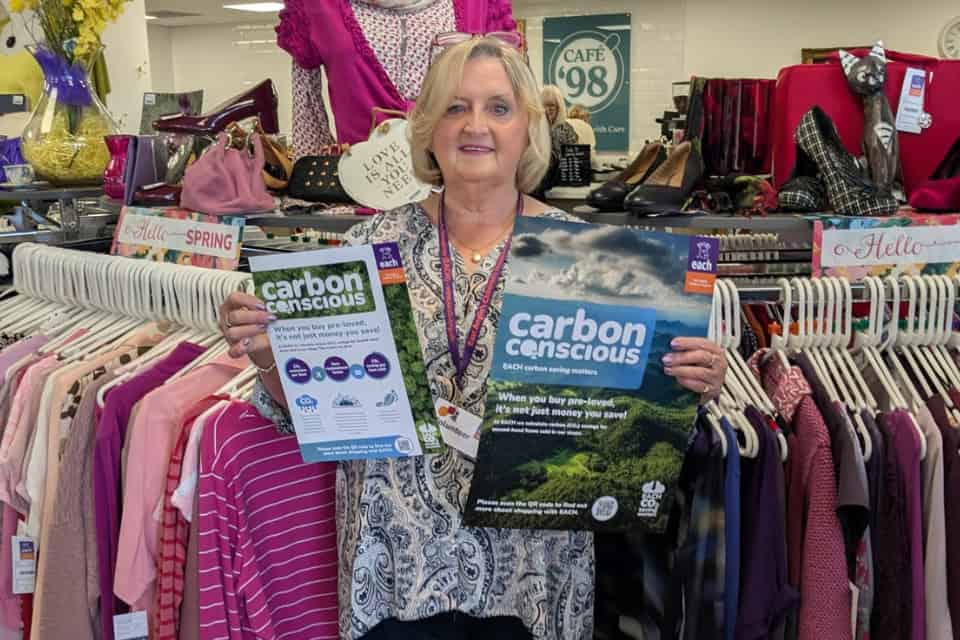Customers using popular charity shops across the region are set to find out more about how they are helping save the planet.
East Anglia’s Children’s Hospices (EACH) is launching its Carbon Conscious campaign – a new awareness initiative highlighting the environmental benefits of buying pre-loved items.
From today, EACH’s tills will display the calculated carbon saving for each individual transaction, and a printed message will appear on till receipts.
Key messaging will appear on customer display screens, and posters will be on display in the charity’s shops across Cambridgeshire, Essex, Norfolk and Suffolk.
“This is something we’ve been working on behind the scenes, and it’s been very informative,” said Genine Woodcock, EACH’s Retail Central Support Manager.
“We all know reusing and repurposing an item is greener and environmentally friendly.
“Now we can help explain the exact saving and let a customer know how much carbon has been saved as a result of them buying donated goods from EACH.
“Hopefully it further encourages the purchase of second-hand goods in our shops – raising vital funds for children and families receiving our care and support – while also helping save the planet.
“Tracking and reducing our carbon footprint is more important than ever as we strive to reduce our environmental impact.
“Buying pre-loved items is one of the ways we can do that. By using items for longer, we help reduce the drain on our planet’s resources, reducing manufacturing pollution, transport pollution and the volume going to landfill.
“It’s been a major piece of work but very worthwhile. Now we’re ready to share our findings with customers, to show how they’re helping save the planet when shopping with us.”
To calculate the savings, EACH multiplied the ‘carbon emissions per item’ by an ‘item replacement factor’.
Carbon emissions relates to the carbon dioxide emissions generated during the manufacture and distribution of a new product.
The information was calculated by gathering data from sources such as peer-reviewed papers, government reports and environmental consulting companies.
There are 42 categories of second-hand products in EACH’s shops, with emission rates representing the average within each product category.
“Not every second-hand sale completely offsets the need for someone having to purchase an equivalent brand-new item,” added Genine.
“The item replacement factor is a calculation which takes that into account.
“As clothing represents the vast majority of our sales, our item replacement factor comes from the 2020 consumer research report, ‘Does buying pre-loved clothing mean buying less new?’
“Based on a 2019 consumer survey of 2,100 UK respondents, the rate was calculated as 52%. That means over half of second-hand clothing purchases directly replace new clothing transactions.
“The buying behaviour of clothing can be indicative of the general attitude towards purchasing all second-hand items, so that’s the figure we applied to all our product categories, making it a reasonable representation across the board.”






